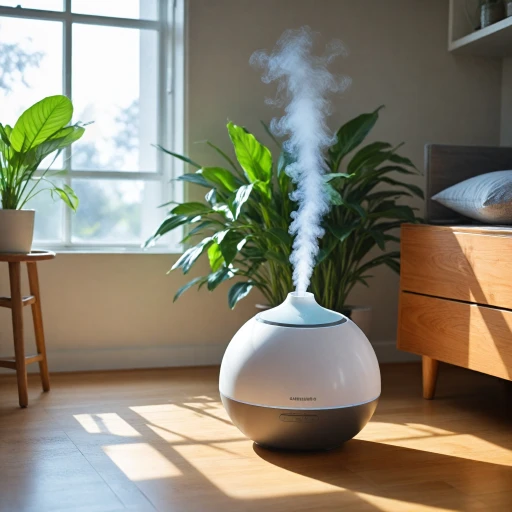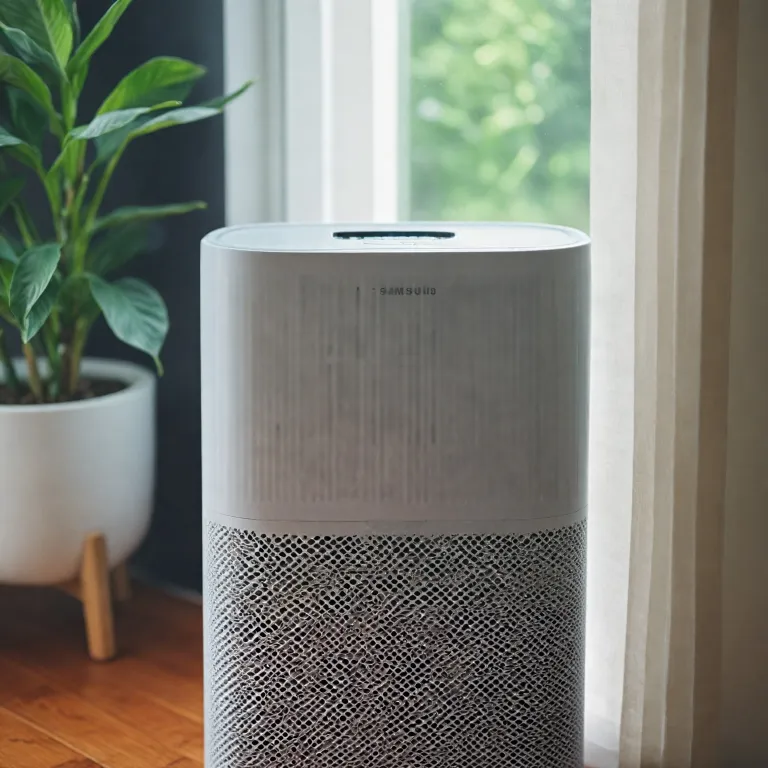What Are Air Return Filters?
Understanding Air Return Filter Basics
Air return filters play a critical role in maintaining the efficacy of an air purification system. These components are situated near the return vents of HVAC systems, acting as the first line of defense against airborne particles. As air circulates through the system, the return filters trap dust, pollen, and pet dander, helping to improve the overall air quality in your home or commercial space. With different filters size and filtration methods, these filters are designed to target specific particles based on their MERV ratings.
The primary function of air return filters is to capture contaminants before they circulate back into the indoor environment. By filtering the air at the return vent stage, they reduce the burden on your HVAC furnace and system, ensuring efficient performance and extending the lifespan of these systems.
While many people might confuse these with other filtration systems like the
importance of kitchen hood filters, air return filters are distinct in their purpose and placement, thus highlighting the need for proper understanding when selecting these filters. The placement within the return grille or air vent allows for maximum surface area exposure, aiding in effective capture of contaminants. Filters like those from well-known brands such as Honeywell and Filtrete air provide differing filtration depths to suit various needs.
Next, we’ll explore how these filters improve indoor air quality and how you can choose the right one for your needs.
How Air Return Filters Improve Indoor Air Quality
Enhancing Indoor Air Quality with Return Filters
Air return filters play a crucial role in maintaining the purity of indoor air by capturing an array of airborne particles. Positioned strategically within HVAC systems, these filters act as a first line of defense against common indoor pollutants. They not only trap dust and pet dander but also reduce larger debris, effectively improving the air quality in both residential and commercial settings.
Large surface area filters, such as those found in many quality brands like Honeywell or Filtrete, are particularly effective at filtration. These filters are adept at intercepting smaller particles, while also dealing with larger airborne contaminants. This means that the depth and efficiency of the filter MERV (Minimum Efficiency Reporting Value) rating influence how well they perform.
Positioned at air return grilles or directly within the furnace, these filters ensure that only clean air circulates back into your interior space. This is achieved by reducing airborne particles that commonly circulate through vent filters. With the right filter size and proper placement, MERV-rated air return filters can significantly enhance the air quality by capturing tiny particles that might otherwise go unnoticed.
For an insightful look into the impact of these systems, including more detailed filter comparisons and reviews, it's worthwhile to further explore their implementation in various settings, such as
kitchen hood filters. This can provide further clarity on how different environments can benefit from specific filtration strategies.
By understanding how air return filters function within HVAC systems, you can effectively choose the right products to maintain a healthier, cleaner indoor environment.
Types of Air Return Filters
Exploring Different Categories of Air Return Filters
When delving into the world of air return filters, it's essential to understand the various types available in the market. Each type boasts unique features and capabilities, adept at handling different levels of dust, airborne particles, and other pollutants. Recognizing these distinctions can significantly impact the efficiency of your HVAC furnace systems.
- Fiberglass Filters: Among the most common options, fiberglass filters are known for their affordability. While they are capable of trapping larger particles such as lint and dust, they may not be as effective for smaller, more harmful contaminants.
- Pleated Filters: Offering a step-up in filtration, pleated filters, like those from brands such as Honeywell and Filtrete, increase surface area for improved dust and particle capture. They are often recommended for households looking to enhance their filtration systems without extensive investment.
- HEPA Filters: High-Efficiency Particulate Air (HEPA) filters are renowned for their superior filtering capabilities, especially in reducing allergens like pet dander. These filters are ideal for families with allergies or those seeking a healthier indoor environment. However, HEPA filters may require specific HVAC adaptations or come as part of standalone air purifiers.
- Electrostatic Filters: Known for their reusable nature, electrostatic filters use self-charging fibers to capture particles. By leveraging static electricity, these filters can trap diverse pollutants, offering reliable defense against indoor air quality issues.
- Activated Carbon Filters: Though not sufficient as standalone options for dust defense, activated carbon filters excel in removing odors and gaseous pollutants, making them an excellent complementary choice to other filter types.
Understanding your specific needs can guide you in selecting the most suitable air return filter for your home. Consider factors like the depth of filtration required, frequency of replacement, and any specific concerns like pet dander or commercial-grade air quality demands. For more details on determining the optimal filter size and its implications, explore our detailed guide on
Understanding the Importance of a 25x25x1 Air Filter.
Making an informed choice will not only enhance indoor air quality but also improve the overall performance of your HVAC system.
Choosing the Right Air Return Filter for Your Needs
Factors to Consider for Selecting an Air Return Filter
When it comes to choosing the right air return filter for your needs, several factors must be carefully considered to ensure optimal performance of your HVAC systems. Selecting the appropriate filter not only enhances indoor air quality but also helps in reducing maintenance frequency and energy consumption.
Firstly, the Minimum Efficiency Reporting Value (MERV) rating should be at the forefront of your decision-making process. MERV ratings, ranging from 1 to 20, indicate the filter's ability to capture airborne particles, including dust, pet dander, and other allergens. Higher MERV ratings offer better filtration but may also restrict airflow, potentially affecting HVAC performance.
The size and depth of the filter also play critical roles. Filters come in various dimensions; hence, it is essential to verify the filter size that fits your return grille. Additionally, the depth of the filter, such as one-inch or two-inch thick, can influence its overall filtration capacity and duration between replacements.
Considering the type of material used in filters is also vital. Options like fiberglass, pleated, and HEPA filters differ in terms of surface area and filtration capabilities. For example, pleated filters, like those from reputable brands such as Honeywell and Filtrete, provide extensive surface areas, enhancing the filter's ability to capture particles.
Another consideration is whether you need filters for residential or commercial use, as commercial-grade filters are often designed for more intensive air filtration needs.
Finally, comparing reviews and assessing compatibility with your existing HVAC furnace systems can aid in making a well-informed choice. Whether you're considering brands like Filtrete or Honeywell, or venturing into new filters, ensure they meet your specific air quality needs.
In summary, choosing the right air return filter involves evaluating MERV ratings, size, material, and intended use, all while balancing filtration efficiency with the airflow needs of your systems. Regular reviews and consistent maintenance can further boost the performance and longevity of your filters. For more information on choosing filters, delve into our detailed guides in the previous sections.
Maintenance Tips for Air Return Filters
Optimizing the Longevity of Your Air Return Filters
Proper maintenance of air return filters is crucial for ensuring efficient performance of your HVAC systems and improving indoor air quality. Understanding the different aspects of maintenance can extend the lifespan of your filters and enhance their filtration capabilities.
- Regular Inspection and Cleaning: It’s essential to periodically check the state of your air return filters. Dust and pet dander can clog the filters, reducing their efficiency. A simple visual inspection can help you determine if a filter needs cleaning or replacing. Regularly cleaning the filters can especially aid in maintaining a system's optimal performance.
- Appropriate Replacement Schedule: While some filters are permanent and merely need cleaning, others require replacement over time. For instance, Honeywell and Filtrete air filters generally need replacing every three months. However, your specific needs might vary based on the environment and filter type. Checking product reviews and guidelines from the filter brands can help establish an effective replacement timeline that suits your space.
- Consider External Factors: If your environment has higher levels of airborne particles or significant pet dander, more frequent cleaning or replacement might be necessary. This includes homes with pets, or areas with high dust levels, where the surface area of the filter can become saturated quicker, thereby requiring stricter maintenance schedules.
- Understanding Filter Ratings: Familiarize yourself with the MERV ratings of your filters. Higher ratings mean better filtration capacity but also imply a need for more diligent maintenance due to their potential for quicker clogging. When filters are clogged, HVAC systems overwork, leading to increased energy consumption and reduced efficiency.
Ensure your HVAC furnace and vent systems are functioning at their best by keeping up with these maintenance practices. By doing so, you not only improve air quality but also extend the life of your HVAC system, safeguarding your home’s air purity with steadfast defenses.
Common Misconceptions About Air Return Filters
Dispelling Myths Surrounding Air Return Filters
When it comes to air return filters, misconceptions abound, often causing confusion and misinformed decisions. Here’s a closer look at some common myths and the truths behind them:
- All Filters Are the Same: Not all air return filters offer the same level of filtration. The Minimum Efficiency Reporting Value (MERV) rating system is key in identifying the effectiveness of a filter. The higher the MERV rating, the more effective the filter is at trapping small particles, including dust and pet dander. Various brands, such as Honeywell and Filtrete Air, offer a range of filters sizing and capabilities to suit different needs.
- Filters Require Rare Replacement: In reality, regular replacement of filters is critical for maintaining optimal air quality. Review the manufacturer's guidelines to determine the recommended schedule for your specific type of filter, as factors like household size and pet presence can influence how often you should change them.
- It's Just the Furnace That Matters in HVAC Systems: While the furnace is a vital component of HVAC systems, the return air and grilles are equally important. The return vent is where the air returns to the system to be reheated or recooled and distributed. Keeping your air filters clean and appropriately rated such as those used for reducing airborne particles is essential for comprehensive defense against indoor air pollution.
- Vent Filters Are Unnecessary: Installing vent filters can seem redundant to some; however, they play a crucial role in supporting the main air return filters in reducing dust and other particulates from recirculating in the air.
Understanding the nuances of air return filters is essential for anyone looking to improve indoor air quality. Steer clear of these myths to make well-informed decisions and ensure your filtration systems function effectively for cleaner, healthier air.

